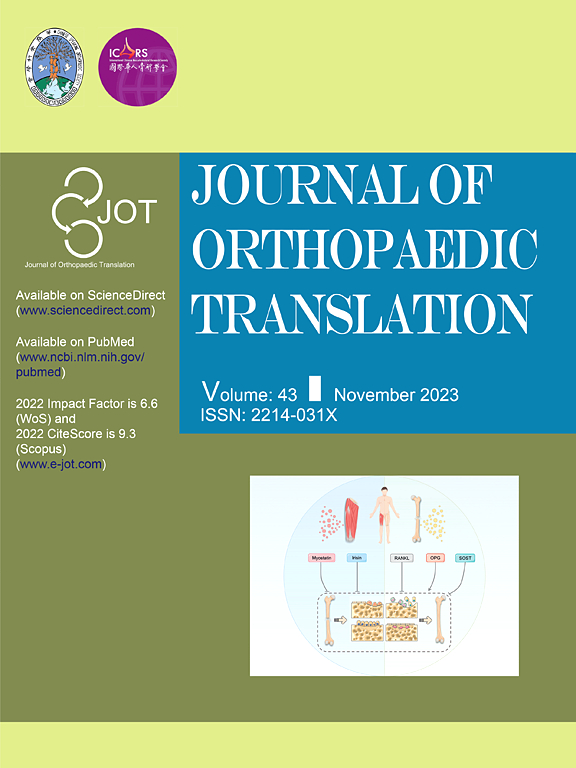Exploring molecular and cellular signaling pathways: Unraveling the pathogenesis of tendinopathy
IF 5.9
1区 医学
Q1 ORTHOPEDICS
引用次数: 0
Abstract
Despite the long healing duration of tendon injuries, the outcomes of repairs are frequently suboptimal, resulting in persistent pain and reduced functionality. Current clinical approaches to tendinopathy are primarily symptomatic, encompassing nonsteroidal anti-inflammatory drugs (NSAIDs), corticosteroid injections, physical therapies, surgical interventions, loading programs, and pain management. Yet, these treatments have protracted timelines and their efficacy remains uncertain. This uncertainty stems largely from an incomplete understanding of tendinopathy's pathogenesis. Unraveling the mechanisms behind tendinopathy is essential for devising novel therapeutic strategies. In this context, this review systematic reviewed more recent cellular and molecular literature in tendinopathy, in order to summarize the up-to-date advancements including the structure and composition of healthy tendons, the pathophysiological changes in tendinopathy, the molecular pathways implicated in various forms of the condition, and current effective treatment methods. This review not only aims to offer insights but also to inspire further investigation into the mechanisms and clinical management of tendinopathy.
The translational potential of this article
A deficient understanding of the molecular mechanisms hampers the advancement of therapeutic strategies and drug development. Consequently, an in-depth examination of these molecular mechanisms is essential for comprehending the etiology of tendinopathy and for devising effective clinical management strategies.

探索分子和细胞信号通路:揭示肌腱病变的发病机制
尽管肌腱损伤的愈合时间较长,但修复的结果往往不理想,导致持续疼痛和功能下降。目前治疗肌腱病变的临床方法主要是对症治疗,包括非甾体抗炎药(NSAIDs)、皮质类固醇注射、物理治疗、手术干预、加载程序和疼痛管理。然而,这些治疗的时间表很长,其疗效仍不确定。这种不确定性主要源于对肌腱病发病机制的不完全理解。解开肌腱病变背后的机制对于设计新的治疗策略至关重要。在此背景下,本文系统地回顾了最近关于肌腱病变的细胞和分子文献,以总结最新的进展,包括健康肌腱的结构和组成,肌腱病变的病理生理变化,与各种形式的疾病有关的分子途径,以及目前有效的治疗方法。这篇综述不仅旨在提供见解,而且对进一步研究肌腱病变的机制和临床治疗有启发作用。缺乏对分子机制的理解阻碍了治疗策略和药物开发的进步。因此,深入研究这些分子机制对于理解肌腱病变的病因和制定有效的临床管理策略至关重要。
本文章由计算机程序翻译,如有差异,请以英文原文为准。
求助全文
约1分钟内获得全文
求助全文
来源期刊

Journal of Orthopaedic Translation
Medicine-Orthopedics and Sports Medicine
CiteScore
11.80
自引率
13.60%
发文量
91
审稿时长
29 days
期刊介绍:
The Journal of Orthopaedic Translation (JOT) is the official peer-reviewed, open access journal of the Chinese Speaking Orthopaedic Society (CSOS) and the International Chinese Musculoskeletal Research Society (ICMRS). It is published quarterly, in January, April, July and October, by Elsevier.
 求助内容:
求助内容: 应助结果提醒方式:
应助结果提醒方式:


